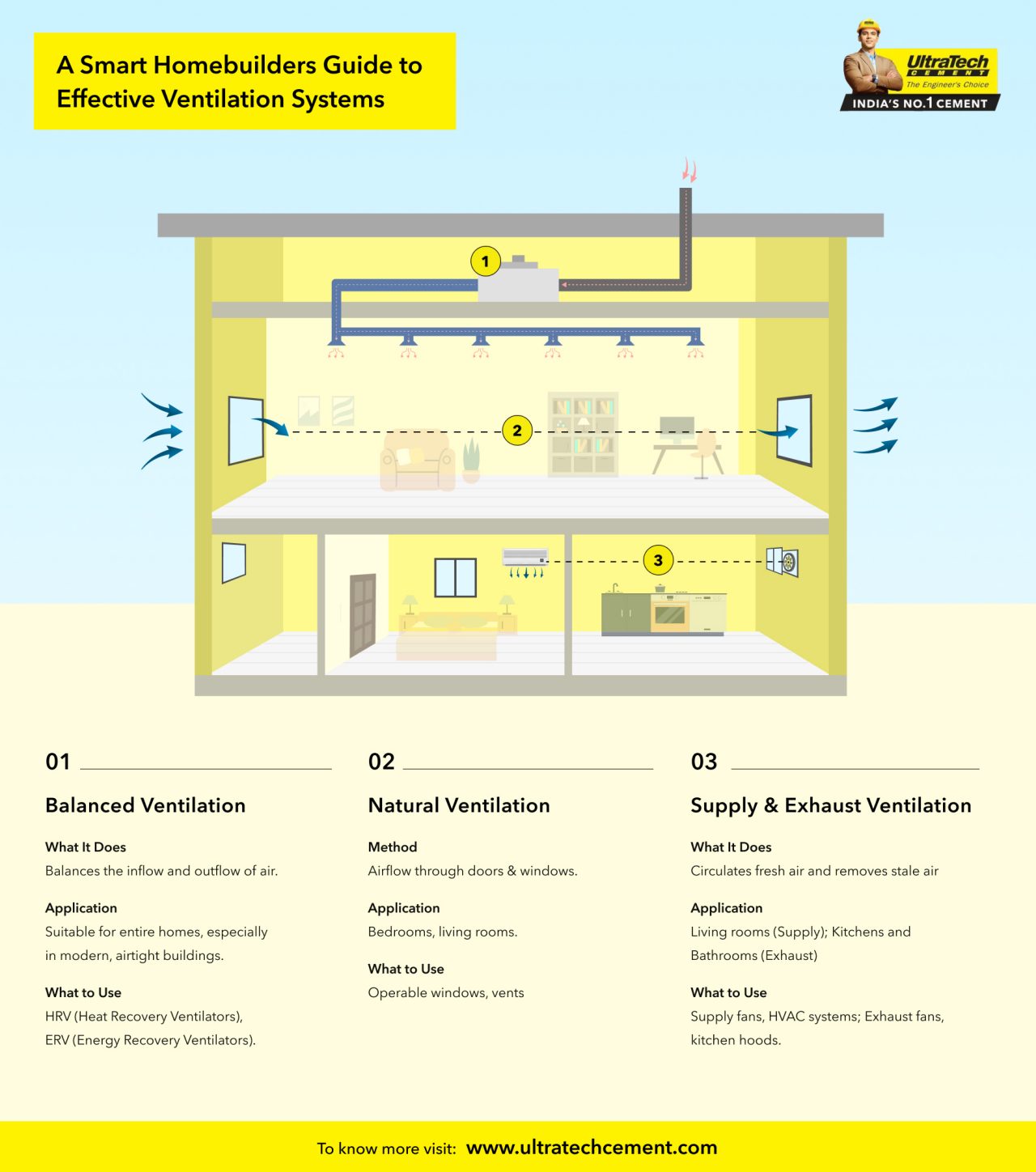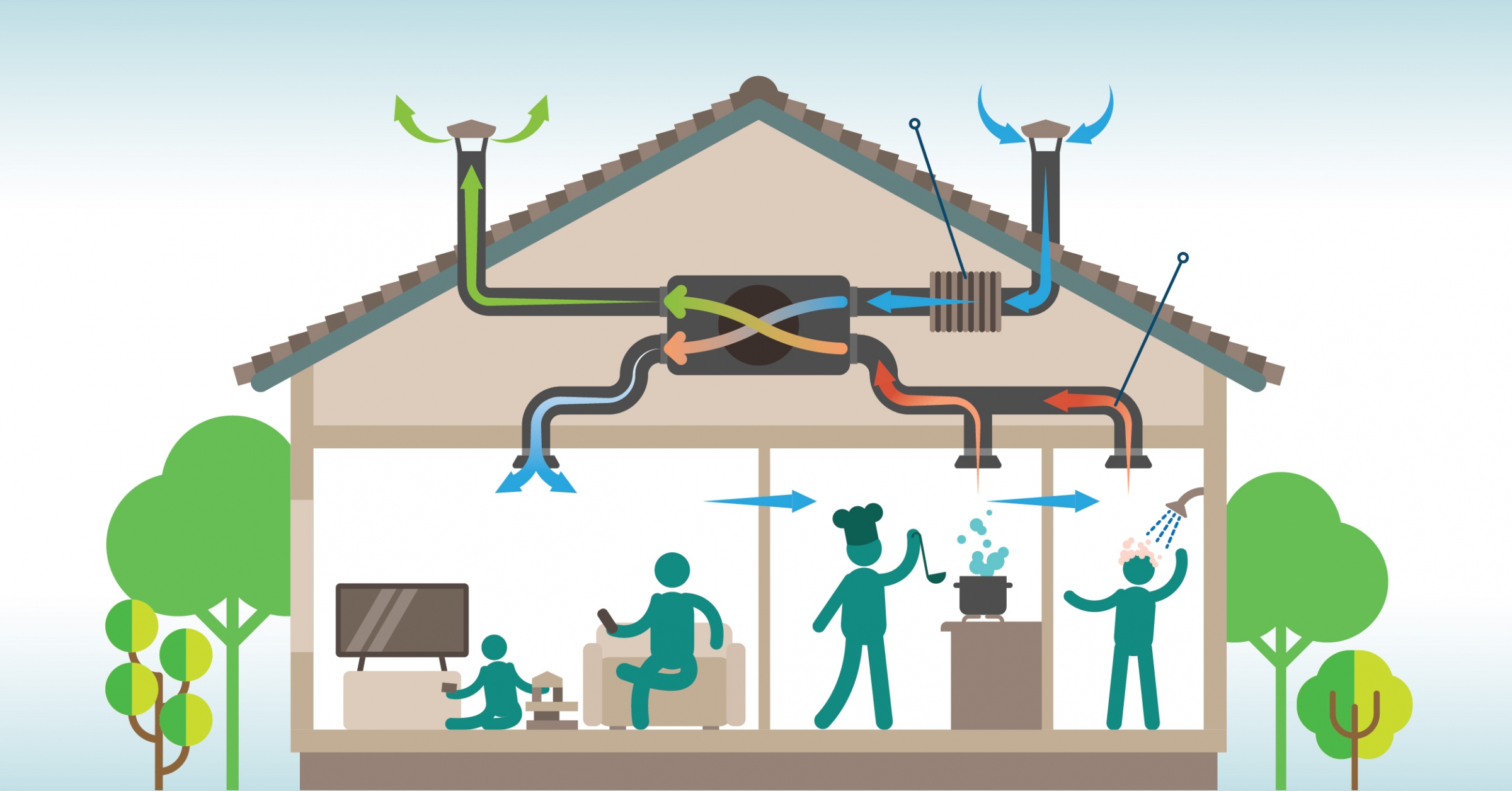How Home Ventilation Melbourne Enhances Comfort and Well-Being
Comprehending the Relevance of Home Ventilation for a Healthier Living Atmosphere
Home air flow plays a necessary function in keeping a healthy living environment. It assists in the exchange of exterior and indoor air, which is essential for boosting air quality. Without proper air flow, homes can come to be breeding premises for allergens and toxins. The repercussions of poor air blood circulation can be significant. This brings up the inquiry of just how house owners can properly implement ventilation strategies to guard their wellness and well-being. Recognizing these methods is important.

The Fundamentals of Home Air Flow
Home air flow acts as an essential element of indoor air high quality and comfort. It involves the process of trading stagnant indoor air with fresh exterior air, consequently reducing humidity and controlling temperature level. Proper air flow systems can include natural techniques, such as open windows and vents, in addition to mechanical systems, such as exhaust fans and air exchangers. Efficient home ventilation aids avoid issues like indoor mold and mildew growth and the buildup of unsafe fragments. It additionally improves general power effectiveness, as well-ventilated areas can preserve comfortable temperature levels with less reliance on heating and cooling down systems. Recognizing the essentials of home air flow is crucial for house owners looking for to produce a much healthier living setting on their own and their households.

Common Sources of Indoor Air Contamination

Numerous may not realize it, interior air contamination can originate from various sources within a family. Typical factors consist of unstable organic compounds (VOCs) sent out from paints, solvents, and cleaning products. Family appliances, such as gas ovens and fireplaces, can release harmful gases like carbon monoxide and nitrogen dioxide. Furthermore, mold and mildew thrive in damp areas, releasing spores that affect air top quality. Family pet dander, allergen, and plant pollen can collect inside, more worsening air pollution levels. Smoking inside generates toxic chemicals that stick around in the air. Finally, building materials, consisting of asbestos and formaldehyde, can off-gas damaging materials. Identifying these resources is necessary for preserving a healthier interior setting and promoting reliable ventilation methods.
Health Results of Poor Ventilation
Indoor air contamination can have considerable health and wellness implications, specifically when ventilation is inadequate. Poor air flow can result in the buildup of dangerous toxins, such as volatile organic substances, mold and mildew, and particulate matter. This build-up may lead to respiratory system problems, consisting of asthma, allergic reactions, and chronic obstructive lung disease. People might experience signs like migraines, tiredness, and irritation of the eyes, nose, and throat. Prone populaces, such as kids and the senior, go to higher threat for extreme wellness results. Lasting direct exposure to inadequately ventilated atmospheres can also add to extra serious problems, including cardiovascular conditions. Guaranteeing appropriate ventilation is essential for maintaining a healthy living setting and decreasing the risk of health complications associated with interior air contamination.
Reliable Air Flow Methods for Your Home
Correct air flow is vital for keeping a healthy indoor atmosphere, and executing efficient techniques can considerably improve air top quality. Home owners can begin by guaranteeing that exhaust fans are mounted in bathroom and kitchens to remove excess dampness and smells. Opening windows consistently allows fresh air to distribute, specifically throughout mild weather condition. Furthermore, using air cleansers with HEPA filters can help catch air-borne contaminants. For homes with home heating and cooling down systems, maintaining heating and cooling systems and changing filters on a regular basis is vital for peak efficiency. Incorporating all-natural ventilation strategies, such as cross-ventilation, can also enhance airflow. Sealing any leaks in doors and home windows protects against undesirable drafts, which can disrupt controlled air flow, inevitably leading to enhanced interior air quality and convenience.
Preserving Ideal Air Quality Year-Round
To maintain suitable air top quality year-round, homeowners should embrace a positive technique to handling their interior environment. On a regular basis keeping an eye on indoor air high quality is essential; this includes monitoring for toxins such as dirt, mold and mildew, and unpredictable natural compounds (VOCs) Executing efficient ventilation systems, such Learn More Here as exhaust fans and article source air cleansers, can considerably reduce airborne pollutants. Additionally, regular maintenance of HVAC systems guarantees peak efficiency and air circulation. Property owners need to likewise think about moisture degrees, as extreme wetness can lead to mold and mildew growth. Seasonal adjustments may demand adjustments in air flow methods to fit varying outdoor air quality. By focusing on these practices, homeowners can develop a healthier living space, promoting total wellness for all passengers throughout the year.
Regularly Asked Questions
Just How Can I Inform if My Home Needs Much Better Ventilation?
To identify if a home requires better air flow, one must observe signs such as persistent moisture, mold growth, mildewy odors, condensation on home windows, or increased allergy signs and symptoms, showing insufficient air flow and potentially bad indoor air top quality.
What Are the Indicators of Poor Indoor Air Quality?

Can Houseplants Improve Indoor Air High Quality Efficiently?
The effectiveness of houseplants in enhancing interior air high quality is discussed. While some research studies suggest they can take in contaminants and create oxygen, their general impact might be very little contrasted to proper ventilation and air purification systems.
Exactly how Typically Should I Change My Air Filters?
The frequency of air filter adjustments normally depends on use and filter kind. Normally, it is recommended to replace filters every 3 months, though houses with pet dogs or allergic reactions might require more frequent modifications for ideal efficiency.
Exist Any Particular Ventilation Systems for Allergy Sufferers?
Many ventilation systems, such as HEPA-filtered units, properly decrease irritants airborne. Home Ventilation Melbourne. These systems trap dirt, plant pollen, and animal dander, giving allergy patients with a cleaner, much healthier interior environment while handling air high quality properly
It helps with the exchange of published here outdoor and indoor air, which is vital for boosting air top quality. Home ventilation serves as a crucial element of interior air quality and convenience. It entails the procedure of exchanging stale indoor air with fresh exterior air, therefore minimizing moisture and regulating temperature level. Indoor air contamination can have substantial wellness implications, specifically when ventilation is insufficient. Proper air flow is important for preserving a healthy and balanced indoor atmosphere, and implementing effective strategies can significantly improve air quality.